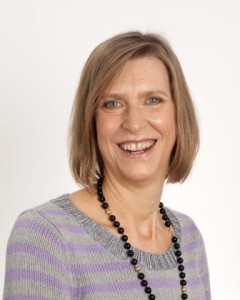It’s a new year and a new beginning for our blogger, Ellen Johansen. She will be adding her insights, tips and suggestions each month. But first let us introduce her:
My name is Ellen Johansen and I have a passion for teaching music to young children. It is my belief that music is one of the most valuable gifts we can share with others; the kind of gift where both the receiver and the giver benefit. Being a Musikgarten teacher, I get to facilitate and develop this gift of music with children and their parents with the hope that they will continue music in their family lives and in their future.
I began teaching piano when I was 16 and I am reluctant to talk about it 🙂
I had no idea what I was doing but I did discover that teaching music was fascinating. In my twenties after studying the art of piano pedagogy in college, teaching became an important source of income. I drove from home to home, sometimes wondering if I was teaching music or providing an expensive babysitting service.
As I developed my home studio and continued to study piano pedagogy, an annoying and enduring question rose, “How do children really learn to read music?” I scrambled to collect every possible method book, theory and ear training workbooks thinking they would somehow answer this basic question. Yet there seemed to be a disconnection from the printed pages of these books to the sound I wished for my students to learn. The joy I wanted them to experience with discovering and creating a musical sound was missing.
Why were my students so squirmy on the bench? They seemed un-interested in my attempts to help them see a half step compared to a whole step. Even though they could name those dots on the page with letter names, why did they seemed no closer to reading music fluently? I found myself blaming it on not enough daily practice. Or maybe I wasn’t following the method books correctly. The children coming for piano lessons could not sing in tune or keep a steady beat. This concerned me greatly.
As I began to raise my own family I recalled all the hours I spent singing with my own family as I was growing up. My Great grandfather was an organ builder, my grandmother was a piano teacher during the depression and my mother and her sisters learned to play the piano and sing. Music was part of my every day as a young child. My mother played the piano and sang every night as I fell asleep and my siblings sang songs and played all sorts of musical games children like to sing and play. We sang and played in the car, we sang and played around the house, we sang at campfires on the beach, we sang in school and at scout meetings, we sang weekly in church and in Sunday school, and we sang and played with our neighborhood friends in the backyard. But the children walking into my studio were growing up in a different culture, where music was performed on the radio or TV and children attended playdates instead of knocking on a neighbor’s door.
Then I found an ad about teaching early childhood music and movement classes in my studio. Maybe this source could help me answer this question. I met Lorna Heyge and everything changed.
I completed every training session offered in early childhood music, and then I taught as many classes as I could book in my music studio. It has now been over 20 years that I have taught the Musikgarten curriculum and this wonderful teacher’s resource has been the ongoing wellsping of appropriate and passionate sequential musical activities that lead the children in my classes towards musical literacy. But it wasn’t without many missteps and musical mishaps before learning how to incorporate this aural and joyful approach to my classroom.
Today I run a successful, independent music studio on the East End of Long Island and offer all levels of the Musikgarten program, from toddlers through keyboard classes. Most of my Musikgarten graduates continue into piano studies. I now have the experience of witnessing many of my Musikgarten graduates go on to study other instruments as well as composition. They enter college with music in their hearts and as part of their course load. One student of mine, who started in a toddler music class, is graduating from High School this year and will be giving a concert of piano music including Debussy’s Arabesque and Gershwin’s Preludes. He is a great example of the Musikgarten graduate who is the literate musician I always dreamed of teaching; he thinks and plays musically, can hear what he sees and sees what he hears. It all started with that first question: “How do children really learn to read music?”
I hope my experience and insights into this marvelous curriculum will help you find your answers to your teaching questions.






